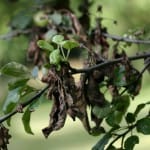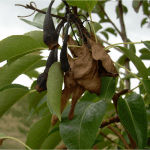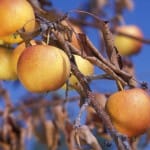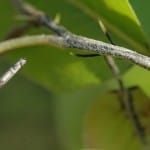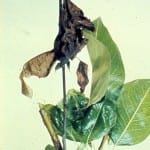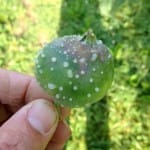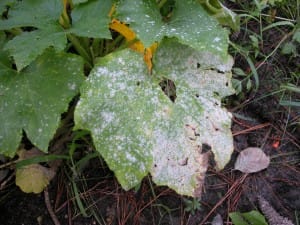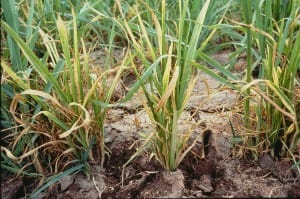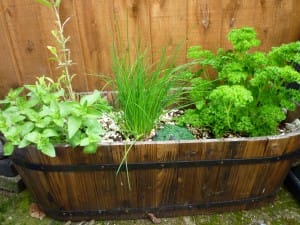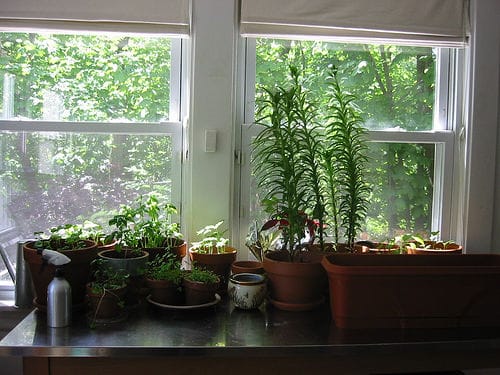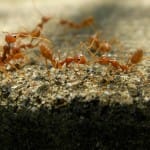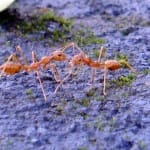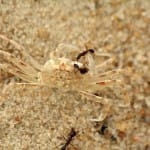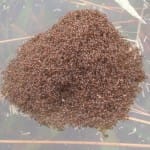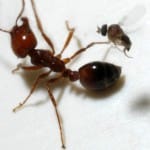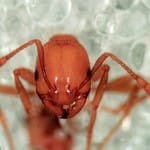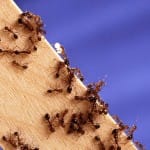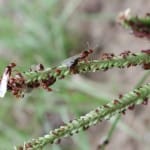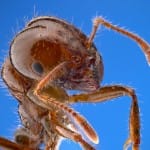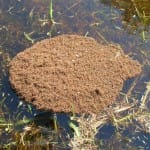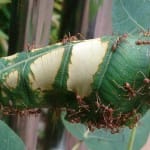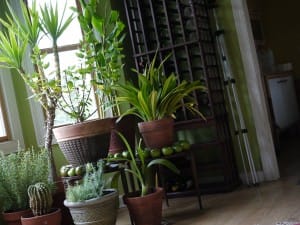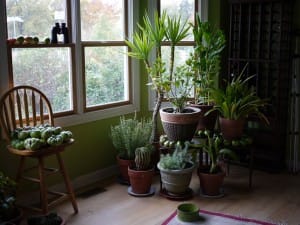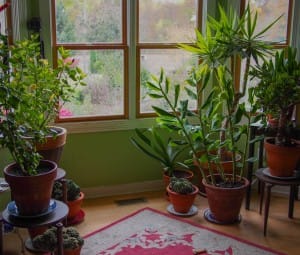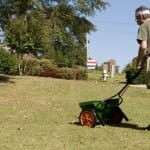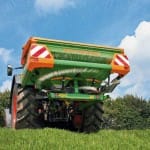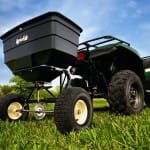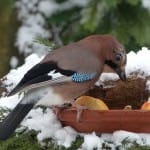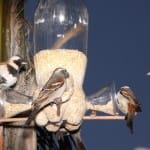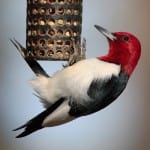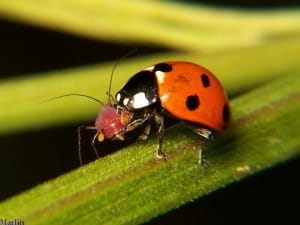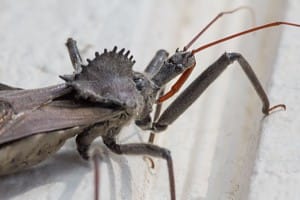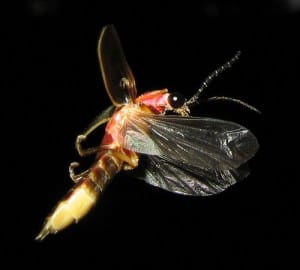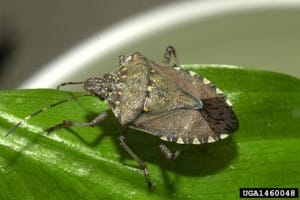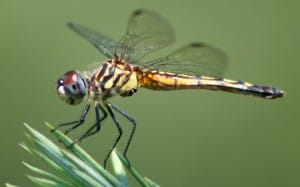Source(s):
- Nancy Doubrava, HGIC Information Specialist
- James H. Blake, Extension Plant Pathologist, Clemson University
Fire blight is one of the most devastating and difficult-to-control diseases of many fruit trees including apple and pear, and other rosaceous ornamental plants. Caused by a bacterium (Erwinia amylovora ), fire blight can spread rapidly, killing individual apple and pear trees and ornamental plants when conditions are right for disease development.
Symptoms
The first symptoms of fire blight occur in early spring, when temperatures are above 60 °F and the weather is rainy or humid. Infected flowers turn black and die. The disease moves down the branch, resulting in death of young twigs, which blacken and curl over, giving the appearance of a “shepherd’s crook.” Leaves on affected branches wilt, blacken and remain attached to the plant, giving it a fire-scorched appearance. Slightly sunken areas, called cankers, appear on branches and the main stem. Many parts of the plant can be affected including blossoms, stems, leaves and fruit. During wet weather you may notice a milky-like, sticky liquid oozing from infected plant parts. Insects and rain can spread the disease.
Plants Commonly Affected
In the home orchard, fire blight can be very destructive to apple and pear trees. Pear trees are particularly susceptible. Some ornamental pear trees, such as ‘Bradford,’ are considered resistant to the disease but can become infected when conditions are favorable for disease development. Certain plants in the rose family (Rosaceae), including many ornamental plants, can be affected by fire blight. Some of these include crabapple, pyracantha, cotoneaster, hawthorn, photinia, quince, loquat and spirea.
Prevention and Treatment
There is no cure for fire blight, making disease prevention extremely important. Controls for fire blight include selecting tolerant varieties, using recommended cultural practices and sanitation measures and applying insecticides and bactericides. Although these methods are not 100 percent effective, they help reduce disease severity.
Recommended Varieties
Select cultivars that are less susceptible to fire blight, and suitable for planting. Some relatively resistant ornamental pear varieties are ‘Bradford, ‘Chanticleer, ‘Fauriei’ and ‘Whitehouse.’ ‘Aristocrat, ‘Autumn Blaze, and ‘Redspire’ are all very susceptible to fire blight infection. A relatively resistant pyracantha is ‘Laland Firethorn,’ and a resistant hawthorn is ‘Washington.’ Relatively resistant edible pears include ‘Kieffer,’ ‘Moonglow,’ ‘Magness,’ ‘Orient,’ and ‘Seckel.’ Resistant apple varieties include ‘Red Delicious,’ ‘Ozark Gold,’ ‘Priscilla,’ ‘Prima,’ ‘Freedom,’ ‘Liberty’ and ‘Spartan.’ Several relatively resistant crabapples include ‘Adams,’Doldo,’ Jewellberry,’ and ‘Liset.’
Cultural Practices and Sanitation Measures
Reduce the spread of fire blight by removing and destroying all infected plant parts. Pruning cuts should be made 12 to18 inches below any sign of infected tissue. Disinfect all pruning tools between cuts using a solution of 1 part household bleach to 9 parts water. Succulent new growth is easily infected, if injured. Also, avoid excess nitrogen fertilization which results in excess succulent growth.
Insecticides and Bactericides
Bacteria enter the plant through blossoms, fresh wounds or natural openings. The disease is spread by rain and insects attracted to the bacterial ooze, such as bees, ants, flies, aphids and beetles. These insects inadvertently carry the bacteria to opening blossoms. Control of insects can reduce the spread of bacteria and the occurrence of infections. During bloom, bees can carry the fire blight bacteria during pollination. Do not use insecticides during bloom.
Fruit Plants
Apple
The recommended bactericide for susceptible apple trees is streptomycin which should be sprayed during bloom and when insects or mechanical means injure tender shoots. Use streptomycin as a preventative treatment only. The time between streptomycin application and fruit harvest must be a minimum of 50 days. Apply all chemicals according to directions on the label.
Pear
Pear trees can also be treated with streptomycin. Apply the first spray as soon as the blossoms open. Repeat at four- to seven- day intervals as long as blossoms are present. The time between streptomycin application and fruit harvest must be a minimum of 50 days. Apply all chemicals according to directions on the label.
Crabapple
Crabapple trees can be treated with one of the following: copper hydroxide, streptomycin, or a commercially available combination spray of sulfur and basic copper sulfate. Do not use streptomycin once fruit is visible. Copper should be applied before and after bloom. If applied during bloom, it will cause russeting on the fruit and possibly fruit abortion. Apply all chemicals according to directions on the label.
Note
Control of diseases and insects on large trees is usually not feasible, since adequate coverage of the foliage with a pesticide cannot be achieved.
Resource(s): Common Landscape Diseases In Georgia
Center Publication Number: 195
